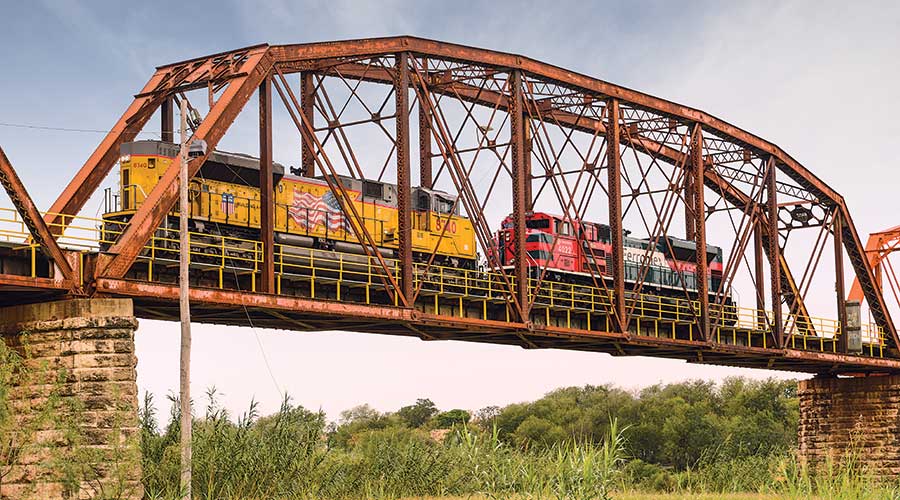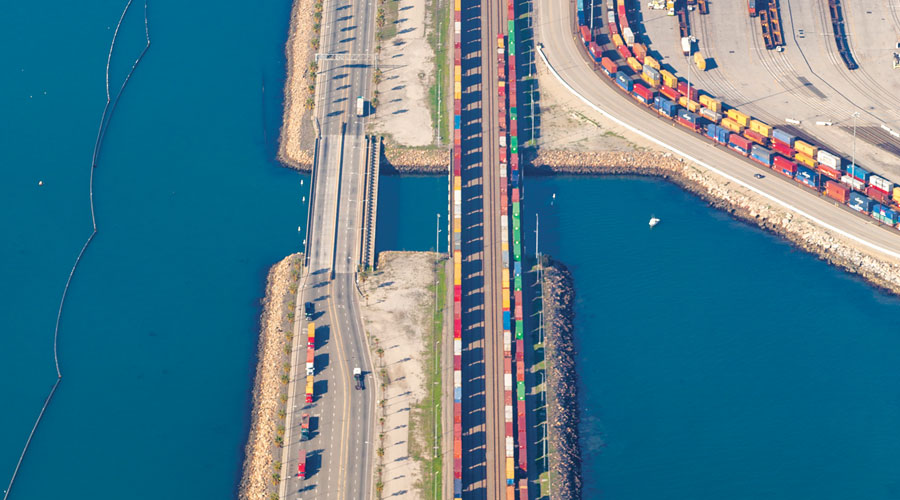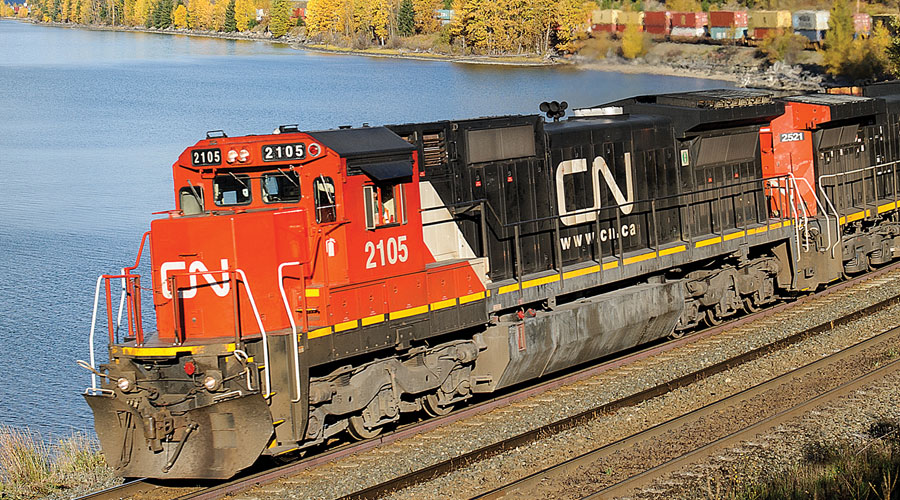Stay updated on news, articles and information for the rail industry
September 2015
Rail News: Intermodal
Guest Comment: Intermodal provides supply-chain solutions for today and the future — by Katie Farmer

Katie Farmer
There are many challenges facing the supply chain over the next several years and intermodal has a value proposition that provides solutions. Looking ahead, it will take the entire supply chain to develop approaches that enable us to leverage more capacity.
In 2014, U.S. rail intermodal volume was a record 13.5 million containers and trailers, breaking the previous record set in 2013. It has grown in large part because railroads have invested billions of dollars in additional capacity and improving existing infrastructure including new intermodal terminals, track upgrades and other projects that have made intermodal more reliable and cost effective.
North American railroads have created the most advanced intermodal network in the world by better utilizing existing rail capacity and making record investments in new infrastructure and equipment directly connected to intermodal operations. Despite the slow economic growth, North American freight railroads have been spending billions annually of their own funds, not taxpayer dollars, to improve the safety and reliability of rail networks and to expand capacity to accommodate customer growth.
Railroads and capex
In 2015, major freight railroads in North America plan to spend more than $20 billion to build, maintain and grow the rail network. This private spending will go to expenditures like new equipment and locomotives, installation of new track and bridges, and new technology used to keep North America’s rail network the best in the world.
As an example, last November BNSF Railway announced its 2015 capital plan will total $6 billion of investment. The 2015 plan marks the third year in a row that BNSF has committed a record amount for capital investments. The added capacity generated through this level of spending will help it handle future volumes and allow BNSF to continue to grow in support of its customers.
In contrast, when you look at our nation’s highway system, since 1980, vehicle miles traveled are up 97 percent but lane miles added have not kept pace — growing only 5 percent. Intermodal offers an opportunity to work with the trucking industry to reduce congestion on the highways and improve emissions over the next decade. Today, rail intermodal service takes millions of trucks off our highways each year, and its potential to play a much larger role in the future is enormous.
Truckers face constraints
As we continue to see growth in freight transportation, we need to be mindful of the constraints being faced by our partners in the trucking industry. One of the biggest issues facing the supply chain is the current and projected driver shortage. Intermodal allows carriers to better utilize the existing workforce as well as be more attractive to future drivers. As an industry, we need to continue to collaborate with our trucking partners to find the right combination of truck and rail to meet our customers’ needs.
Another challenge for the supply chain is just sheer population growth. By 2019, experts predict the United States will add 10.2 million people — the current population of the state of Georgia — bringing the population total to 332 million. According to the U.S. Department of Transportation, the United States currently moves 63 tons of freight per person, per year. So, if you do the math — even if the freight per person remains the same — that would equal an additional 648 million new tons of freight.
By 2050, our nation’s population is expected to exceed 420 million people, a 35 percent increase from 2012. And with that growth, it’s estimated that an additional
4 billion tons of freight will need to move through the supply chain. Intermodal will provide the necessary capacity to make that happen.
Demand for intermodal will continue to grow as the economy strengthens and the trucking industry experiences tightening capacity. As the economy continues to grow stronger, additional capacity in the North American rail network is necessary as we move beyond 2015. It will take collaboration between the railroads, our customers (many of whom are trucking companies) and beneficial cargo owners to implement strategies that allow us to creatively generate capacity and meet future demand.
Katie Farmer is group vice president for consumer products at BNSF Railway Co. and chair of the Intermodal Association of North America (IANA). IANA will showcase this year’s top industry solutions at Intermodal EXPO, which will be held Sept. 20-22 in Fort Lauderdale, Fla.
Keywords
Browse articles on intermodal supply chain Intermodal Association of North America IANA Katie Farmer BNSFContact Progressive Railroading editorial staff.


 2025 MOW Spending Report: Passenger-rail programs
2025 MOW Spending Report: Passenger-rail programs
 Gardner steps down as Amtrak CEO
Gardner steps down as Amtrak CEO
 Guest comment: Oliver Wyman’s David Hunt
Guest comment: Oliver Wyman’s David Hunt
 Women of Influence in Rail eBook
Women of Influence in Rail eBook
 railPrime
railPrime







